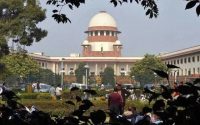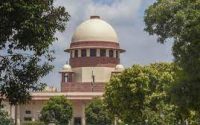Explained: When Supreme Court reviews a decision.
Source – indianexpress.com
A number of recent Supreme Court decisions have given currency to the expression “review petition”. Petitioners plan to seek review of the recently delivered Babri Masjid-Ram Janmabhoomi and telecom revenue verdicts, while the Supreme Court this month agreed to review its Sabarimala verdict but refused to do so in the Rafale case.
So what is a review petition and when can it be filed?
A judgment of the Supreme Court becomes the law of the land, according to the Constitution. It is final because it provides certainty for deciding future cases. However, the Constitution itself gives, under Article 137, the Supreme Court the power to review any of its judgments or orders. This departure from the Supreme Court’s final authority is entertained under specific, narrow grounds. So, when a review takes place, the law is that it is allowed not to take fresh stock of the case but to correct grave errors that have resulted in the miscarriage of justice.
The court has the power to review its rulings to correct a “patent error” and not “minor mistakes of inconsequential import”. In a 1975 ruling, Justice Krishna Iyer said a review can be accepted “only where a glaring omission or patent mistake or like grave error has crept in earlier by judicial fallibility”.
It is rare for the Supreme Court to admit reviews. This month, in a 3-2 verdict, the Supreme Court agreed to review its 2018 verdict in the Sabarimala case. On November 14, the court refused to review its December 2018 ruling seeking a probe into the Rafale deal. Last year, the court allowed the Centre’s petition seeking a review of a March 2018 judgment that had effectively diluted the Scheduled Castes and Scheduled Tribes Atrocities Act.
On what grounds can a petitioner seek a review of an SC verdict?
In a 2013 ruling, the Supreme Court itself laid down three grounds for seeking a review of a verdict it has delivered — the discovery of new and important matter or evidence which, after the exercise of due diligence, was not within the knowledge of the petitioner or could not be produced by him; mistake or error apparent on the face of the record; or any other sufficient reason. In subsequent rulings, the court specified that “any sufficient reason” means a reason that is analogous to the other two grounds.
In another 2013 ruling (Union of India v. Sandur Manganese & Iron Ores Ltd), the court laid down nine principles on when a review is maintainable. “A review is by no means an appeal in disguise whereby an erroneous decision is reheard and corrected but lies only for patent error,” the court said. It added that the mere possibility of two views on the subject cannot be a ground for review.
Who can file a review petition?
It is not necessary that only parties to a case can seek a review of the judgment on it. As per the Civil Procedure Code and the Supreme Court Rules, any person aggrieved by a ruling can seek a review. However, the court does not entertain every review petition filed. It exercises its discretion to allow a review petition only when it shows the grounds for seeking the review.
What is the procedure the court uses to consider a review petition?
As per 1996 rules framed by the Supreme Court, a review petition must be filed within 30 days of the date of judgment or order. While a judgment is the final decision in a case, an order is an interim ruling that is subject to its final verdict. In certain circumstances, the court can condone a delay in filing the review petition if the petitioner can establish strong reasons that justify the delay.
The rules state that review petitions would ordinarily be entertained without oral arguments by lawyers. It is heard “through circulation” by the judges in their chambers. Review petitions are also heard, as far as practicable, by the same combination of judges who delivered the order or judgment that is sought to be reviewed. If a judge has retired or is unavailable, a replacement is made keeping in mind the seniority of judges.
In exceptional cases, the court allows an oral hearing. In a 2014 case, the Supreme Court held that review petitions in all death penalty cases will be heard in open court by a Bench of three judges.
On what grounds is the Ayodhya verdict sought to be reviewed?
So far, only the All India Muslim Personal Law Board has said it would seek a review. The Uttar Pradesh Sunni Central Waqf Board and other petitioners are divided on this. While it is yet to disclose the grounds it will cite for seeking a review, the issue of compensation of 5 acres of land granted to the Uttar Pradesh Sunni Central Waqf Board in lieu of the demolished Babri Masjid is a crucial one that the petitioner is likely to challenge.
What if a review petition fails?
As the court of last resort, the Supreme Court’s verdict cannot result in a miscarriage of justice. In Roopa Hurra v Ashok Hurra (2002), the court itself evolved the concept of a curative petition, which can be heard after a review is dismissed to prevent abuse of its process. A curative petition is also entertained on very narrow grounds like a review petition, and is generally not granted an oral hearing.
Related Posts

Supreme Court Suggests Amending Constitution Over Powers Of Speaker To Disqualify MPs, MLAs.

Key Supreme Court judgments that marked 2020

